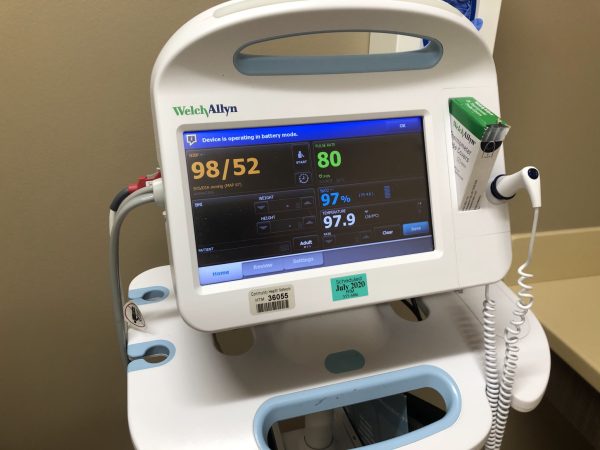在医疗保健领域,清晰的沟通和视觉信息对于患者护理和医疗专业人员至关重要。先进显示技术在提升效率、准确性和整体医疗保健成果方面发挥着关键作用。本文探讨了串口屏在医疗保健应用中的适用性的解决方案,并重点介绍了多种适用于医疗行业特定需求的有效串口屏类型。
串口屏在医疗领域的优势
串口屏具备多项优势,使其成为医疗应用的理想选择:
高分辨率与图像质量
串口屏提供高分辨率与卓越图像质量,使医疗专业人员能够清晰查看医学影像、诊断报告及患者病历,助力准确诊断、治疗方案制定及手术操作。
色彩准确性与一致性
串口屏具备卓越的色彩准确性和一致性,对于查看X光片、MRI和CT扫描等医学影像至关重要,确保医疗人员能够准确解读和分析视觉数据,从而做出精准的临床决策。
宽视角
串口屏具备宽视角,可让多名医疗专业人员同时查看同一屏幕,且不会出现图像失真或色彩偏移,这在医疗环境中促进了协作讨论、会诊及多学科团队会议的开展。
触摸屏交互性
触摸屏串口屏可在医疗环境中实现交互式界面,使临床医生能够通过直观的触控操作输入数据、浏览电子健康记录(EHR)并访问医疗信息,从而提升工作流程效率和用户参与度。
符合医疗标准
专为医疗应用设计的串口屏符合医疗级显示屏的行业标准,包括放射影像的DICOM校准、抗菌涂层以控制感染,以及坚固耐用的设计以适应临床环境,确保符合监管要求和患者安全标准。
医疗应用中有效的串口屏类型
1. 手术监视器显示器
手术监视器串口屏用于手术室和手术套间,提供手术过程、内窥镜成像和微创手术的实时可视化,具备高清图像质量、低延迟及与手术设备兼容性,以提升手术过程的精准度和安全性。
2. 患者监护显示屏
患者监护串口屏集成于床边监护仪、遥测系统及重症监护室(ICU),用于显示生命体征、心电波形、血氧饱和度及报警通知,实现持续患者监护,使医疗人员能够评估患者状况、识别趋势并迅速响应病情变化。
3. 远程医疗与远程健康显示屏
远程医疗串口屏支持远程会诊、远程健康预约及虚拟患者互动,通过展示视频会议画面、医学影像研究资料及电子健康记录,为医护人员和患者提供服务,拓展医疗服务可及性,并实现远程诊断与治疗选项。
4. 医疗推车显示屏
医疗推车串口屏安装于移动工作站、药物推车及床边终端,为临床医护人员提供电子健康记录系统、药物管理记录、临床决策支持工具及患者教育材料的即时访问,提升工作流程效率并保障用药安全。
5. 数字标牌与导向显示屏
数字标牌串口屏部署于医院、诊所及候诊区,用于展示健康教育信息、预约提醒、设施地图及导向标识,为患者、访客和工作人员提供信息,提升沟通效率、缩短感知等待时间,并改善医疗设施内的整体患者体验。
串口屏在医疗领域的其他应用
除上述显示类型外,串口屏在医疗领域还拥有多样化应用,包括:
电子健康记录(EHR)工作站
串口屏集成于EHR工作站、护士站及医师文档区域,为医疗专业人员提供患者病历、医疗图表、医嘱录入系统及临床决策支持工具的访问权限,促进文档记录效率、信息共享及护理协调。
药房发药系统
串口屏被应用于药房发药系统、药物核对站及自动化药物配送单元,用于显示药物处方、药物相互作用、剂量说明及患者特定信息,确保药剂师、护士及药物管理人员能够安全准确地进行药物发放。
培训与模拟中心
串口屏集成于医疗培训模拟器、医学教育实验室及模拟中心,为医学生、住院医师及专业人员提供真实患者情景、操作指南及教学内容,助力实践操作学习、技能提升及临床能力评估。
远程监测与远程护理设备
串口屏嵌入远程监测设备、可穿戴健康追踪器及远程护理系统,实时显示患者健康数据、活动追踪指标及健康预警信息,供患者、护理人员及医疗提供者使用,实现远程监测、慢性病管理及预防性干预措施。
健康管理与患者互动终端
串口屏应用于健康管理终端、患者互动门户及自助服务登记站,为寻求预防性护理、健康筛查及健康资源的个体提供健康评估、教育视频、预约工具及个性化健康建议。
结论
综上所述,串口屏在推动医疗技术进步和提升患者护理质量方面发挥着关键作用,通过提供高分辨率视觉效果、交互式界面及符合医疗标准的解决方案,适用于广泛的医疗应用场景。凭借多样化的串口屏类型,医疗机构可根据具体需求选择合适的显示解决方案,无论是用于手术可视化、患者监测、远程医疗咨询、药物管理还是患者参与计划。串口屏在医疗领域的应用超越了传统显示技术,涵盖临床环境、远程医疗平台、培训设施及以患者为中心的护理模式等创新解决方案。随着医疗行业持续推进数字化转型和以患者为中心的科技应用,串口屏将始终是提升临床工作流程、提高诊断准确性、保障患者安全与满意度的核心技术,在现代医疗服务不断演进的格局中发挥不可或缺的作用。
